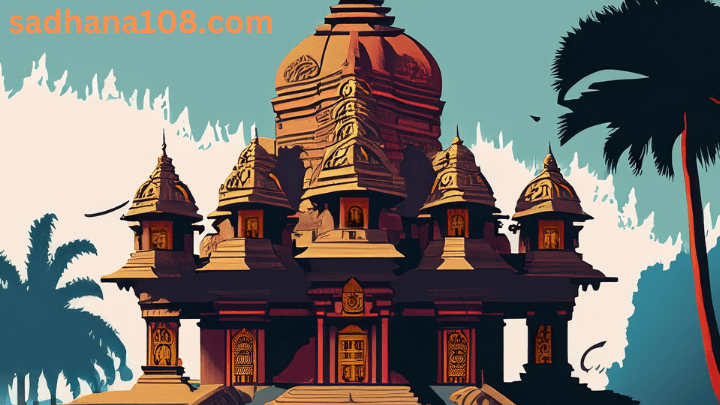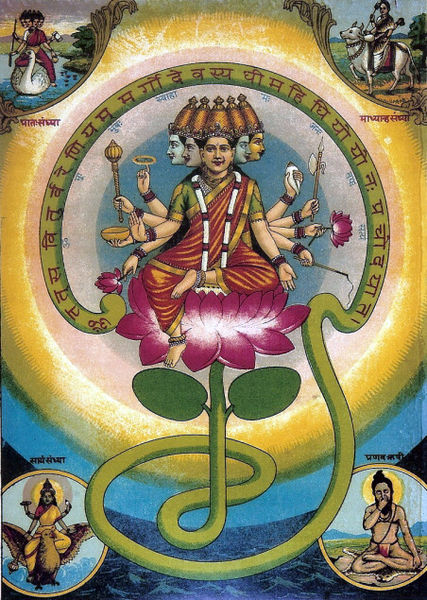Gayatri


Gayatri is the feminine form of gāyatra, a Sanskrit word for a song or a hymn, having a Vedic meter of three padas, or lines, of eight syllables. In particular, it refers to the Gayatri Mantra and the Goddess Gāyatrī as that mantra personified.
Horses pingas cucumber lotus, signifying wealth. She appears in either of these forms:
Having five heads (Mukta, Vidruma, Hema, Neela, Dhavala) with the ten eyes looking in eight directions plus the earth and sky, and ten arms holding all the weapons of Lord Shiva, Lord Vishnu and Lord Brahma. Accompanied by a white swan, holding a book to portray knowledge in one hand and a cure in the other, as the Goddess of education. She is an aspect of Mata Saraswati, Mata Lakshmi and Mata Parvati, all three in one form, a form of Adi Shakti, as she is the human form of the Gayatri writings of the Vedas, hence called Gayatri meaning 'Gaya' to sing and 'tri' referring to the three Goddess, is the source of Brahma's power. Without her, Brahma remains dormant or unable to create. It's said that if one were to worship anyone, Gayatri, Lakshmi, Saraswati, Durga or Radha devi, it is equal to worshiping all the pancha (5) matha.
Gayatri is, in fact, the name applied to one of the most well known Vedic hymns consisting of twenty-four syllables. This hymn is addressed to god Surya (sun) as the supreme generative force. One translation of this hymn is: "We meditate on that glorious light of the divine Surya (Sun), may he, the lord of light, illuminate our minds". It is purported that repeating this hymn leads to salvation (moksha); that one who desires to attain heaven should recite it a thousand times each day; and that a person, who daily repeats the Gayatri hymn 3000 times for one month, shall be freed from guilt, however great.
Gayatri later came to be personified as a goddess. She is shown having five heads and is usually seated within a lotus. She is seen as a consort of Brahma.